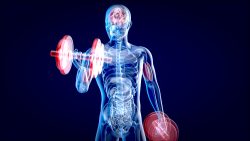Negative Emotions Can Affect Aging of the Brain
 As we ponder the future and what it holds, we may wonder how we can ensure a long and fulfilling life. Researchers have recently discovered that the key to healthy brain aging could lie in managing our negative emotions. By maintaining contentment and happiness, we may actually protect ourselves against the cognitive decline often associated with aging and illnesses like dementia. The latest research published in Nature Aging is an exciting step forward in understanding how we can take control of our brain health as we grow older.
As we ponder the future and what it holds, we may wonder how we can ensure a long and fulfilling life. Researchers have recently discovered that the key to healthy brain aging could lie in managing our negative emotions. By maintaining contentment and happiness, we may actually protect ourselves against the cognitive decline often associated with aging and illnesses like dementia. The latest research published in Nature Aging is an exciting step forward in understanding how we can take control of our brain health as we grow older.
The study delves deep into the mysterious link between negative emotions and neurodegenerative diseases like dementia. The goal is to unravel how stress and anxiety impact the brain and explore potential solutions to sabotage these harmful outcomes. Unfortunately, emotions have been a bit of an afterthought in aging research, with cognitive functions taking center stage. But this study stands out for recognizing the crucial role emotions play in the health of our aging brains.
The mystery of how emotions affect our health has long baffled scientists. What’s intriguing is that they’re still not sure how our brain transitions from one emotion to another or how age impacts the impact of emotions on our mind and body. But a team has taken steps to unravel this mystery by studying how older and younger people react to negative emotions. Through a series of fMRI scans, they discovered interesting findings about how the brain functions when watching videos of emotional suffering. So if you thought emotions only affected your mood, think again – they could have long-term health consequences if not managed properly.
The results reveal that negative emotions activate specific brain regions, which can remain altered long after the emotions have passed. Interestingly, the duration of these changes varies depending on an individual’s ability to regulate their emotions. Furthermore, it was discovered that negative emotions can alter the communication between different brain regions and these changes tend to linger longer in older individuals.
Discoveries from the study revealed remarkable changes in the communication pathways between the amygdala and posterior singular cortex, areas of the brain that control our emotional responses and store our memories. This finding is even more striking in adults who reported experiencing high levels of anxiety, negative thoughts, and overthinking. These factors could potentially amplify the emotional intensity that was observed in the study’s results.
The team is currently examining whether prolonged emotional inertia may increase the risk of degenerative diseases such as dementia. By following participants over several years, researchers hope to uncover any changes in their emotional regulation and cognitive function. While some studies suggest a connection between poor emotion regulation and age-related neurodegenerative conditions, it’s unclear whether these diseases impair our ability to regulate our emotions or vice versa.
As the population ages, keeping our elderly healthy has become a pressing public health concern. While living a long life is noteworthy, staying in good physical and mental health is paramount. We must focus on preserving the quality of life for our senior citizens. These findings have massive implications for our understanding of emotional regulation as we age.
While researchers acknowledge that further investigation is necessary to confirm their findings, recent studies suggest that emotional regulation may play an important role in reducing the risk of neurodegeneration.
To view the original scientific study click below:
Exposure to negative socio-emotional events induces sustained alteration of resting-state brain networks in older adults



 Napping is a widely accepted practice in regions such as Murcia, Spain, but long siestas of over 30 minutes have been linked to increased risk of obesity, metabolic syndrome and high blood pressure. According to researchers, if you’re pining for a midday snooze, make sure it’s a quick power nap. The duration, sleep posture, and other factors may have an impact on the nap’s health outcomes. To expand on this finding, the impact was investigated on metabolic health in the culturally-entrenched siesta-haven of Spain, examining the role of siesta duration. In a previous study of a large population in the UK, a like was identified between siestas and a higher risk of obesity.
Napping is a widely accepted practice in regions such as Murcia, Spain, but long siestas of over 30 minutes have been linked to increased risk of obesity, metabolic syndrome and high blood pressure. According to researchers, if you’re pining for a midday snooze, make sure it’s a quick power nap. The duration, sleep posture, and other factors may have an impact on the nap’s health outcomes. To expand on this finding, the impact was investigated on metabolic health in the culturally-entrenched siesta-haven of Spain, examining the role of siesta duration. In a previous study of a large population in the UK, a like was identified between siestas and a higher risk of obesity.  A recent study has shown that even just the sensation of hunger has the potential to slow down the ageing process. This new research, published in the scientific journal Science, reveals that the mere taste and aroma of food can, in fact, overturn the benefits of dietary restrictions. Although previous findings have established that caloric limitations can significantly boost the lifespan of animals, this latest study has found that fruit flies can increase their life expectancy through hunger alone.
A recent study has shown that even just the sensation of hunger has the potential to slow down the ageing process. This new research, published in the scientific journal Science, reveals that the mere taste and aroma of food can, in fact, overturn the benefits of dietary restrictions. Although previous findings have established that caloric limitations can significantly boost the lifespan of animals, this latest study has found that fruit flies can increase their life expectancy through hunger alone. A recent study has shown that air pollution can lead to the development of arrhythmia, a medical condition characterized by abnormal heartbeats. Atrial fibrillation and atrial flutter are two types of arrhythmias that, if not treated, can cause heart disease or blood clots. It is worth noting that heart disease affected an estimated 244 million people worldwide in 2020, according to the American Heart Association.
A recent study has shown that air pollution can lead to the development of arrhythmia, a medical condition characterized by abnormal heartbeats. Atrial fibrillation and atrial flutter are two types of arrhythmias that, if not treated, can cause heart disease or blood clots. It is worth noting that heart disease affected an estimated 244 million people worldwide in 2020, according to the American Heart Association. Did you know that just 30 minutes of phone use per week could increase your risk of high blood pressure, a leading cause of heart attacks and strokes? Recent research has found that individuals who spend even a short amount of time talking on their phone, even with hands-free devices, may see their risk for hypertension rise by 12%. And if you’re using your phone for more than 6 hours a week, your risk jumps by 25%. These findings may explain why rates of high blood pressure and heart disease have increased by more than double in recent years.
Did you know that just 30 minutes of phone use per week could increase your risk of high blood pressure, a leading cause of heart attacks and strokes? Recent research has found that individuals who spend even a short amount of time talking on their phone, even with hands-free devices, may see their risk for hypertension rise by 12%. And if you’re using your phone for more than 6 hours a week, your risk jumps by 25%. These findings may explain why rates of high blood pressure and heart disease have increased by more than double in recent years.  Recent findings show that exercise benefits not only the body but also the mind. In fact, a new publication in the journal Neuroscience points out that exercise has an even more profound impact on brain health than previously thought. This research investigates how chemicals produced by muscles during movement lead to neuronal development in the brain, specifically affecting the hippocampus areas responsible for long-term memory storage.
Recent findings show that exercise benefits not only the body but also the mind. In fact, a new publication in the journal Neuroscience points out that exercise has an even more profound impact on brain health than previously thought. This research investigates how chemicals produced by muscles during movement lead to neuronal development in the brain, specifically affecting the hippocampus areas responsible for long-term memory storage.  A newly developed test could shine a light on potential cognitive impairment ahead of any visible symptoms, offering invaluable insight into risk factors for the future.
A newly developed test could shine a light on potential cognitive impairment ahead of any visible symptoms, offering invaluable insight into risk factors for the future. A University of South Australia study has revealed a crucial link between vitamin D deficiencies and brain health- specifically, an increased risk for dementia.
A University of South Australia study has revealed a crucial link between vitamin D deficiencies and brain health- specifically, an increased risk for dementia. Looking for the secret to a healthier life? According to a recent study, it might be time to ditch the city and head to the mountains. Two million people living at elevations over 4,500 meters appear to have lower rates of metabolic diseases like coronary heart disease and diabetes. While daily mountain hikes could certainly contribute to good health, researchers now believe the key is low oxygen levels caused by high elevation living. This animal study could help find new ways to treat metabolic diseases by exploring the connection between oxygen levels and health.
Looking for the secret to a healthier life? According to a recent study, it might be time to ditch the city and head to the mountains. Two million people living at elevations over 4,500 meters appear to have lower rates of metabolic diseases like coronary heart disease and diabetes. While daily mountain hikes could certainly contribute to good health, researchers now believe the key is low oxygen levels caused by high elevation living. This animal study could help find new ways to treat metabolic diseases by exploring the connection between oxygen levels and health. Exercise isn’t just beneficial for your physical health, but it may also be the key to maintaining a healthy gut. A recent study found that exercise duration is an important factor when boosting the microbiome – having more of an impact than intensity alone. According to experts, regularly engaging in longer bouts of activity can provide significant advantages for overall gut well being.
Exercise isn’t just beneficial for your physical health, but it may also be the key to maintaining a healthy gut. A recent study found that exercise duration is an important factor when boosting the microbiome – having more of an impact than intensity alone. According to experts, regularly engaging in longer bouts of activity can provide significant advantages for overall gut well being.